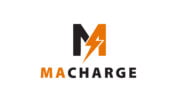
Did you know electric vehicles and their charging infrastructure have been around for over a century? In fact, in the late 1800s and early 1900s, electric vehicles were a popular mode of transportation. Especially in urban areas! Consequently, a number of companies (EV Charger manufacturers) began developing electric vehicle chargers to support the growing demand for these vehicles. Some to these companies are household brand names of today. Continue reading to find out who.
The first electric vehicle (EV) charger manufacturer is a bit difficult to pinpoint. This is because as the development of EV chargers was a gradual process involving multiple inventors at the time. And the electricity was a rapidly growing industry with many new inventions. However, one of the earliest and most significant players in this field was the Electric Vehicle Company. The company was founded in 1897 by Isaac Rice and Andrew Riker. Electric Vehicle Company was based in Elizabethport, New Jersey (not California !!). It initially focused on manufacturing electric vehicles.
Other EV Charger Manufacturers
Other notable early EV charger manufacturers include General Electric. GE began producing electric vehicle chargers in the early 1900s. The company developed a number of different charging systems, including a “portable” charging system that could be easily moved from location to location. It’s odd to think the simplest convenience solutions were thought about over 100 years ago.
Westinghouse Electric also developed an AC electric vehicle charging system in the 1910s. The company developed an AC electric vehicle charging system that was more efficient than existing DC charging systems. Westinghouse’s AC charging system used a transformer to step up the voltage from the power source. This allowed for faster charging times and more efficient use of electricity. Just like today!
EV Charger Manufacturers – Going Out of Business
The Electric Vehicle Company manufactured electric vehicles as well as charging equipment. They were installed at various locations in New York City. The charging equipment consisted of a meter, a rheostat, and a charging cable all mounted on a wooden board. The company’s chargers were initially designed to charge their own electric vehicles, a similar business concept to Tesla. But they also sold chargers to other electric vehicle owners. These chargers were also used to charge batteries that were used in a variety of electric vehicles, including electric cars, trucks and even buses.
Despite the early promise of electric vehicles and their charging infrastructure, the market for these vehicles and their chargers declined sharply in the 1920s and 1930s. The advent of the gasoline-powered automobile. This is around the time Ford came up the concept of the mass-production for the masses. Owning a gas car became affordable to the common folk. Additionally, improvements in road infrastructure made gasoline-powered vehicles more practical and convenient for many consumers. As a result, many electric vehicle manufacturers went out of business. The market for electric vehicle chargers all but disappeared for about 60 to 70 years.
Electrical Vehicles – Comeback Story
It wasn’t until the 1990s that electric vehicles began to make a comeback. With the growing concern over air pollution and climate change, many people began to look for alternatives to gasoline-powered vehicles. This led to a renewed interest in electric vehicles and their charging infrastructure.
In the 1990s, a number of companies began developing electric vehicle chargers. These chargers were designed to work with new electric vehicles that were being developed by companies like General Motors and Toyota. Many of these chargers were developed using new technologies that allowed for faster charging times and more efficient use of electricity.
Today, there are a wide variety of electric vehicle chargers available on the market. These chargers range from simple Level 1 chargers that can be plugged into a standard household outlet, to Level 2 chargers that require a dedicated electrical circuit and can charge a vehicle much faster. There are also DC fast chargers that can charge an electric vehicle to 80% capacity in as little as 30 minutes.
Electric Vehicle Chargers Investments
In Canada, United States and European countries for example, federal governments are provided funding for the development of a nationwide network of electric vehicle charging stations. These networks aim to provide fast-charging stations along major highways and in urban areas across the country.
Private companies are also investing in the development of electric vehicle charging infrastructure. Tesla, for example, has developed its own network of fast-charging stations, called Superchargers, that are designed specifically for Tesla vehicles. Other companies, like ChargePoint and Electrify America, are developing networks of charging stations that can be used by any electric vehicle.
The Future of Electric Vehicle Chargers
In addition to traditional electric vehicle chargers, there are also a number of “smart” chargers on the market. These chargers are designed to be connected to the internet and can communicate with the electric grid to help balance electricity demand. They can also be programmed to charge a vehicle during off-peak hours, when electricity is cheaper and more plentiful.
As electric vehicles become more popular and more mainstream, the demand for electric vehicle chargers is also increasing. Governments and private companies around the world are investing in the development of new charging infrastructure to support the growing number of electric vehicles on the road.
As the market for electric vehicle chargers continues to grow, so too does the technology behind these chargers. Companies are developing new charging systems that are faster, more efficient, and more convenient for consumers. For example, wireless charging technology is now being developed that will allow electric vehicles to charge simply by parking over a wireless charging pad. This shows how far we’ve come from charging equipment consisting of a meter, a rheostat, and a charging cable all mounted on a wooden board.
The story of the first electric vehicle charger manufacturers is a fascinating story that spans over a century. From the early days of the Electric Vehicle Company to the modern era of smart chargers and wireless charging pads, the development of electric vehicle chargers has been a gradual process that has involved multiple inventors and companies.
